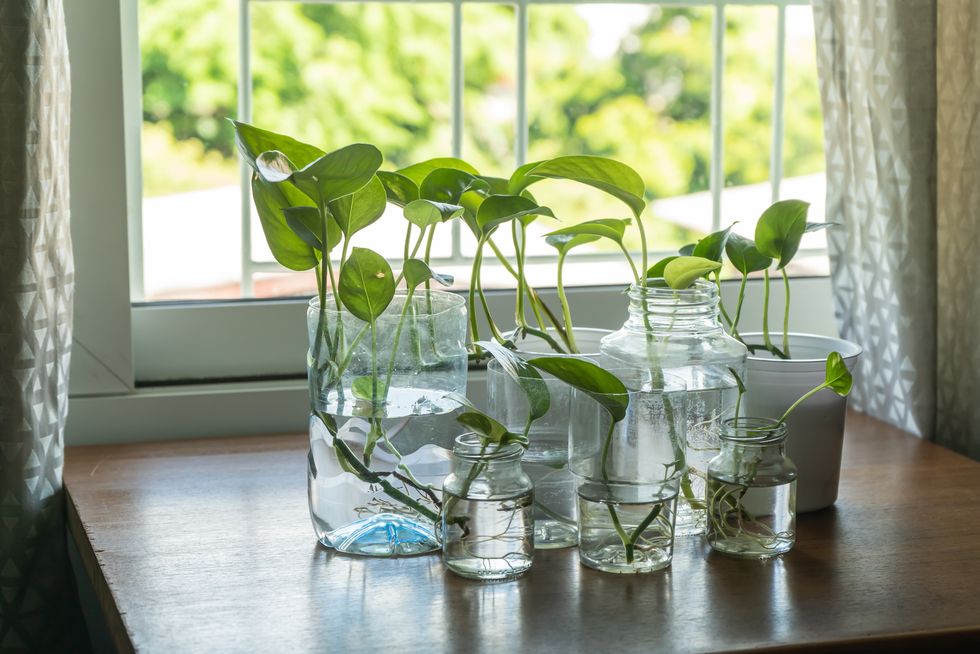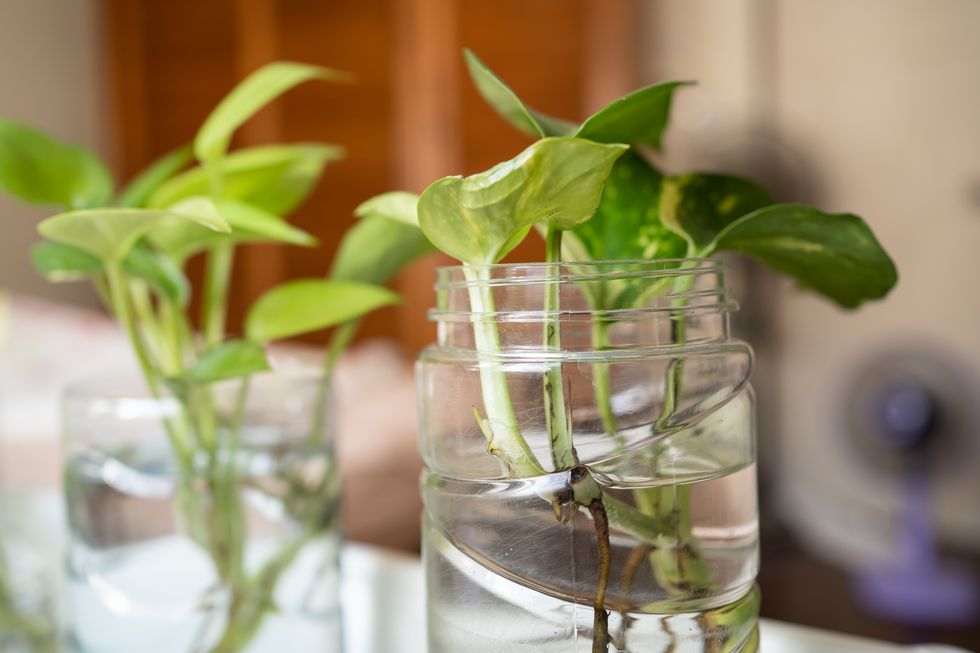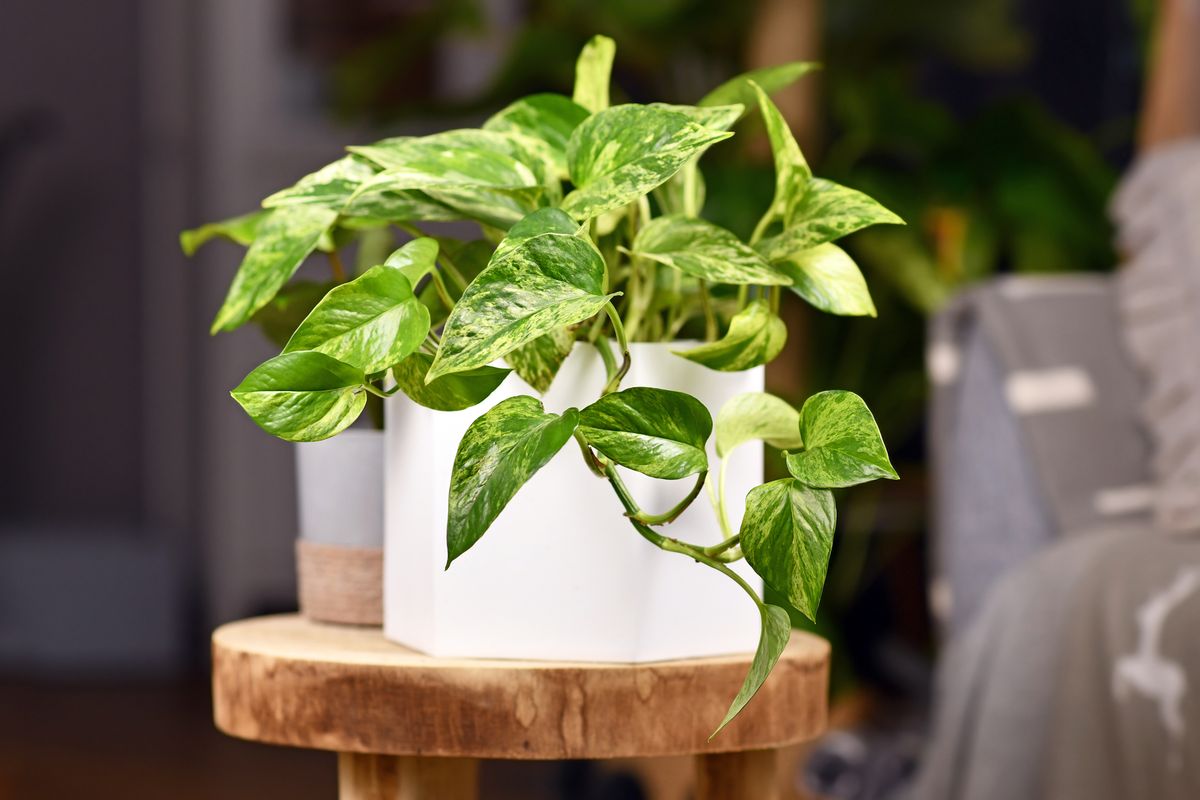Recognized by its scientific designation, Epipremnum aureus, this houseplant, known as pothos, hails from the Solomon Islands and thrives in well-lit spaces with indirect sunlight, fostering its rapid growth.
Nevertheless, it is not fond of direct sun exposure, as it can result in leaf scorch. Fortunately, pothos demonstrates contentment even in moderate light conditions and can adapt remarkably well to low-light environments. Whether adorning your living room end table or gracing your work desk, it will flourish with delight.
Should you desire to expand your collection of pothos plants without spending a dime, you’re in for a treat. Propagating pothos is an incredibly straightforward and fulfilling process. You can effortlessly generate new plants for your own abode or engage in exchanges with friends. Moreover, propagating new pothos specimens serves as a means to revitalize plants that have grown excessively long and leggy.
Pothos proves to be an ideal choice for novice plant enthusiasts, as it can tolerate a certain degree of neglect (even if occasional watering slips your mind). Surprisingly, the only foolproof way to bring about the demise of your pothos is through excessive watering!
Ideally, pothos appreciates slightly drying out between waterings. To determine if it requires hydration, simply insert your finger into the potting mix and assess its moisture level. If the soil adheres to your finger, it would be wise to wait a few more days before watering and reassessing.
A multitude of pothos varieties boast a trailing growth habit, elegantly cascading out of their containers. With the aid of a moss pole or other supporting structures, most pothos types will eagerly climb upwards, adding to their visual appeal.
ZAUGONTW Moss Poles for Climbing Plants, 2 Pcs 12” Coir Pole (Total 20”) with 4 Pcs Adjustable Plant Ties for Creepers Plant Support Extension, Climbing Plants Support Indoor
While you can easily find the commonly available golden pothos in numerous stores, there has been a remarkable introduction of new varieties in recent years, featuring stunning creamy or variegated patterns.
The present-day market offers a diverse selection of exquisite pothos plants, each with its unique charm.
However, it is essential to note that this particular houseplant is toxic to cats and dogs. Therefore, if you have a furry friend with a penchant for nibbling, it’s crucial to keep the pothos out of their reach. (For a comprehensive list of pet-friendly plants to cultivate, you can refer to our article here).
Now, let’s delve into the essentials of propagating pothos:

How do I propagate pothos?
The most straightforward approach to propagate additional pothos plants is by taking a cutting from a healthy vine. This process requires no special equipment, only a pair of scissors or plant snips and a glass of water.
Begin by selecting a cutting that is approximately 6 inches in length. Ensure that the cutting includes a few leaves and nodes—the points where the leaves connect to the stem. You may also notice small brown bumps known as aerial roots, which aid in climbing when pothos grows naturally in the wild. These aerial roots also serve as the sites where new roots will develop.
Submerge the cut end of the stem in the glass of water, ensuring that the leaves remain above the water level while the node and aerial root are immersed. Place the glass in a well-lit area with indirect sunlight, avoiding direct exposure. Remember to change the water every few days to maintain its freshness.
Over time, the cutting will begin to sprout roots. Once the roots reach several inches in length, it is time to transfer the cutting into a pot filled with fresh potting soil.
Create a small hole in the soil using your finger, gently insert the cutting into the hole, and carefully press the soil around it. Water the newly potted cutting lightly, keeping the soil consistently moist but not overly saturated.
If you wish to expedite the filling of a pot, you can place multiple rooted cuttings in a single container. Ensure the pot receives bright, indirect light, and observe as your new pothos plants flourish and thrive.

How long does it take for pothos cuttings to root?
It can take up to 10 days or longer, so be patient. If nothing’s happening after a few weeks, toss the cuttings, clean out the vase, and try a fresh cutting.
Bonide Rooting Hormone
The most straightforward approach to propagate additional pothos plants is by taking a cutting from a healthy vine. This process requires no special equipment, only a pair of scissors or plant snips and a glass of water.
Begin by selecting a cutting that is approximately 6 inches in length. Ensure that the cutting includes a few leaves and nodes—the points where the leaves connect to the stem. You may also notice small brown bumps known as aerial roots, which aid in climbing when pothos grows naturally in the wild. These aerial roots also serve as the sites where new roots will develop.
My pothos cutting died. What happened?
As with many endeavors in life, there are no guarantees. It’s important to note that not every pothos cutting will successfully transition from water to soil.
However, the beauty of the process is that you can always give it another try! If you find yourself encountering repeated failures, you can experiment with the hormone rooting/soil method, as it may offer improved outcomes.




